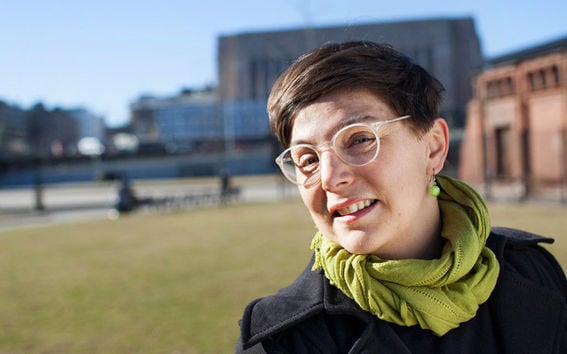Better bureaucracy through design

There it is again, sneakily demanding attention. A pile of unrequested letters received by a family providing informal care for a loved one at home. Several hospital departments, Kela as well as the city's social services and education departments have approached the family. Each letter demands action: attestations, submissions, powers of attorney. Not a single one brings relief to everyday life.
Sorting through the pile makes you think why none of the senders has considered what it feels like to constantly have to verify that your loved one's disability has not been cured, or that they are still ill or elderly. Why go through the painful process many times, for many sectors of administration and on paper no less? Couldn't the rigmarole be made more efficient? Could, say, service design, be of help?
From matter to the unsteady
This is the first academic year in which Professor Tuuli Mattelmäki has taught service design to undergraduate students. The course has been around for years, but only on the Master's level. Introducing user-centred service design to the early stages of studies makes the concept of service – something other than a tangible and unchanging end product – more familiar and understandable to students.
“There's plenty of designed matter in this world,” says Professor Mattelmäki, who specialises in product and service systems.
“Service design is an umbrella term that covers a lot of different activities. Many professionals who are not trained as designers engage in service design,” she says.
Often a service has just been formulated out of necessity – the data the form requires must be conveyed from the customer to the system – and not a single design professional has participated in its design.
“Being user-oriented, thinking about what has value and meaning for the user of the service, is of essential importance.”
Whether a service is produced by a business or a public agency, its meaning is not the same as the interface the user encounters. Nor is meaning created by a company's reception premises or mobile application, and certainly not by that paper letter filled with bureaucratic jargon.
Secure at home
Aalto University and the City of Helsinki have realised numerous joint projects, which have introduced the operating practices of service design to the public sector. The City has defined user-oriented innovation as one of its strategic goals and wants to shift the emphasis of services from organisation-driven to user-oriented.
The most recent cooperation venture developed a customer-oriented service network in the Lauttasaari district that gathers the services required by senior citizens and families providing informal care at home according to the needs of the customers instead of the organisations. Customers get help for matters like dental health issues and advice on how to manage everyday chores, among other things.
Information about their needs was compiled by studying the daily routines of customers and the social services they use. Having an understanding of the necessary support measures and expectations of each family that engages in informal care makes it possible to provide more individualised help, almost matching the one-stop principle. The customer is not asked to consider if help and the budget for it is provided by a health centre, dental care unit, the emergency services or the elder services unit.
Smooth public relations
It is not always easy to work as a designer in the labyrinthine public sector. Permit application processes, intra-organisation jargon, slow decision-making and the strict boundaries between different administrative departments add a special flavour to the work. Still, Tuuli Mattelmäki sounds confident when emphasising how design expertise is in many way comprehensive, especially when it is combined with other competencies.
Service design is, in her eyes, very much a public relations activity. Relationships and networks must extend to the service user and also to the service providers, decision-makers, administrators, personnel – the list goes on.
The entire process chain of each service is examined. The links of the chain include many different actors, all of which have an impact on what the end user, that very ordinary person, winds up experiencing.
Designers can expect to keep getting plenty of work that does not involve product design. Let's hope that at least a few designers decide to tackle those stacks of mail that still haunt families providing informal care at home.
Text: Tiiu Pohjolainen
Photo: Terhi Korhonen
The original article has been published in the Aalto University Magazine issue 13. (issuu.com)
Read more news

DeployAI Partners Gather for Heart Beat Meeting in Helsinki
The European DeployAI project's partners gathered for the Heart Beat meeting hosted by Aalto University Executive Education in Helsinki.
Online AI course could boost study equality
Students at the School of Business believe that mastering Artificial Intelligence (AI) can be beneficial for both academic success and career prospects, as AI becomes increasingly integrated into daily life.
2 027 new students admitted to Aalto University’s Finnish, Swedish bachelor’s programmes
13 500 applied to Aalto University in Finland's spring joint application in 2024